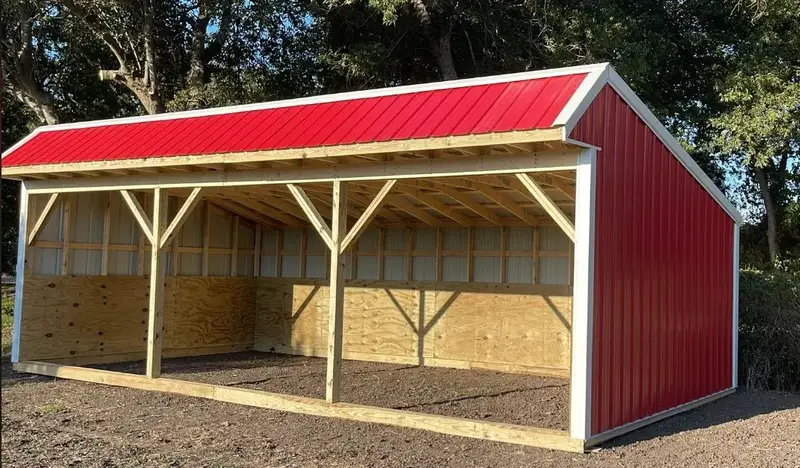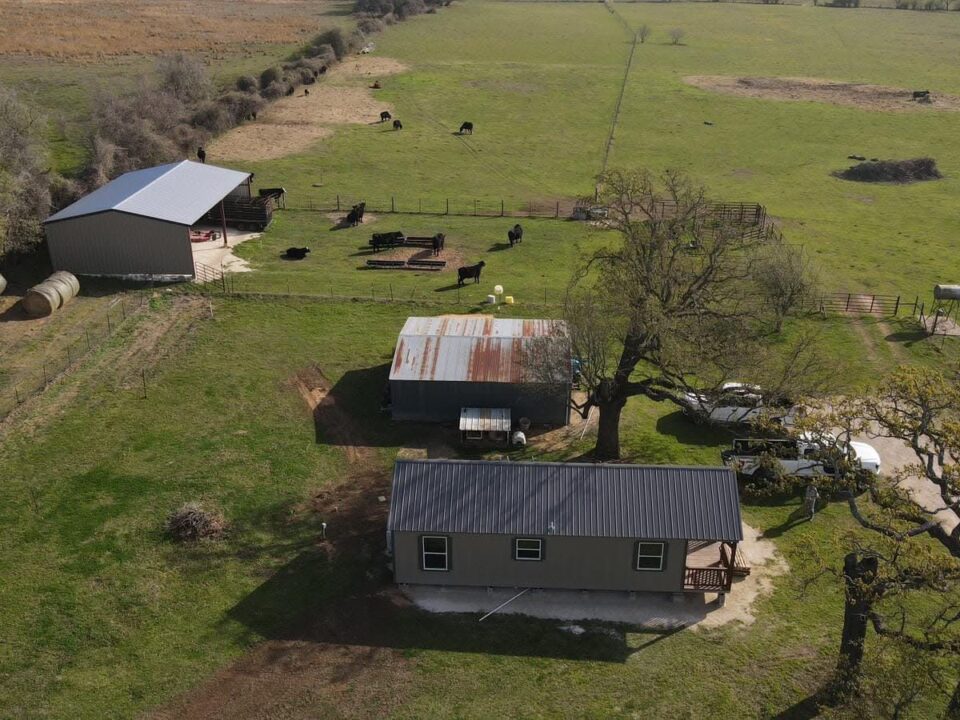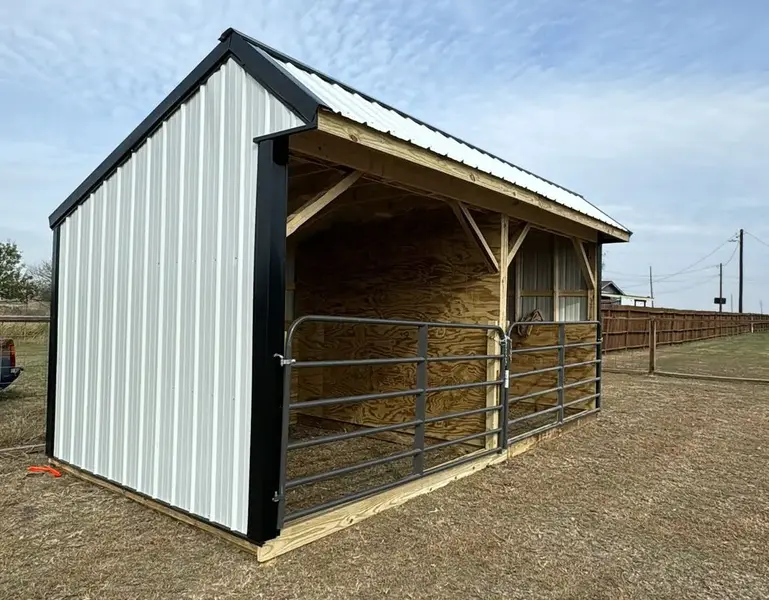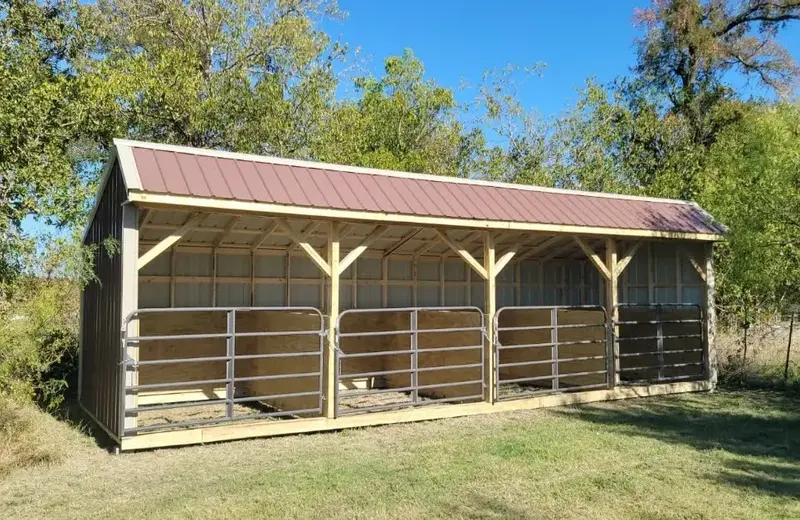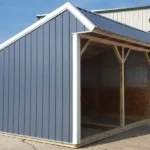
How a Good Animal Shelter Can Prevent Injury and Illness
June 6, 2025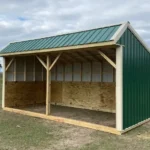
How to Keep Your Animal Shelter Clean and Organized: Essential Tips
June 8, 2025🐾 How to Choose the Right Shelter Size for Your Animals
When it comes to livestock and companion animals, one size definitely doesn’t fit all. Choosing the correct shelter size for your animals ensures not only their comfort and safety—but also their long-term health and your peace of mind.
Whether you’re housing goats, horses, chickens, or working dogs, the shelter you build should match your animals’ needs, behavior, and space requirements. Too small, and you risk crowding, injuries, and stress. Too large, and you may be overspending on unused space.
Let’s walk through how to choose the right shelter size for your animals—so your investment protects what matters most.
🐴 Start with Species-Specific Space Requirements
Every species has its own comfort zone. Chickens need compact, cozy spaces with just enough room to perch and lay. Goats prefer covered areas where they can stay dry, lie down, and see their surroundings. Horses need wide, open bays with clear movement space, especially if they’ll be sharing the area.
At Wolf Valley, we recommend starting with a baseline square footage per animal:
Horses: Minimum 12×12’ per horse in a stall or 12×24’ in a shared loafing shed
Goats: 10–15 sq ft per goat indoors, with additional outdoor access
Dogs (kennel runs): 40–60 sq ft per dog for working breeds
Chickens: 2–4 sq ft per bird inside the coop, 8–10 sq ft in outdoor run
These numbers are starting points. Your animals’ breed, age, health, and social behavior may require more room.
🧱 Consider How Many Animals You’re Housing
Planning for now is smart—planning for the future is even better. If you currently have five goats but plan to grow your herd, it may be more cost-effective to build a slightly larger shelter now than to add on later.
Overcrowding increases stress, which can lead to fighting, injury, or illness. A proper shelter size for your animals gives them enough space to lie down, stand, move freely, and access food and water without competition.
In shared shelters (like goat or horse barns), each animal should have enough personal space to avoid unnecessary conflict—especially during feeding or sheltering in bad weather.
🌬️ Don’t Forget About Ventilation and Vertical Space
It’s not just about square footage—height and airflow matter, too. Horses and larger animals need head clearance to stand and turn comfortably. In poultry shelters, higher ceilings help reduce ammonia buildup and allow heat to rise.
At Wolf Valley, our shelters are built with open gables, ridge vents, and raised floors for better airflow. Good ventilation reduces the risk of respiratory illness and keeps bedding dry, which protects hooves, skin, and overall health.
For animals like chickens or rabbits, adding vertical perches or nesting levels makes better use of a smaller footprint without reducing comfort.
🛠️ Think Through Daily Use and Layout
How will you use the shelter each day? Will you enter to clean, feed, or medicate animals? Will you need separate pens, runs, or storage areas?
A good shelter design considers more than just animal space—it makes your job easier, too. For example:
Add a feed room if your animals are in the shelter full-time
Include a center aisle for easy access to stalls or pens
Use removable partitions for breeding, birthing, or isolation
Custom options like these are available in all Wolf Valley animal shelters. We help you create a space that’s efficient, safe, and suited to your land and livestock.
📍 Climate and Location Also Matter
In regions like Texas, Oklahoma, and Arkansas, animal shelter design must account for extreme heat, heavy rain, and strong winds. Colder climates often call for tighter insulation and fully enclosed walls to retain warmth and protect against drafts. Meanwhile, in hotter areas, shade and open-sided structures provide better ventilation and help prevent overheating.
A larger structure may provide better airflow in hot climates, while a smaller enclosed space may retain warmth better in winter. Wolf Valley designs every shelter based on your local conditions—so your animals stay safe in every season.
🧑🌾 Make It Work for You—and Them
Choosing the right shelter size for your animals means balancing comfort, cost, and daily practicality. A well-sized shelter reduces stress, supports better health, and saves time. It also avoids the need for costly expansions later.
When in doubt, go just a bit bigger than your current need—but always prioritize quality over quantity. A sturdy, well-designed structure with the right layout often performs better than a large, poorly planned one.
🚀 Ready to Design Your Shelter?
At Wolf Valley Buildings, we specialize in animal shelters that are species-specific, climate-aware, and fully customizable. Whether you need a loafing shed, goat barn, kennel run, or chicken coop—we’ll help you choose the right size and layout for your animals and your goals.
Internal Links:
Wolf Valley Animal Shelters Save You Money
Why Your Animals Deserve More Than Just a Shed
🌐 Outbound Link
For more species-specific sizing recommendations, see Penn State Extension: Animal Housing Guidelines.

